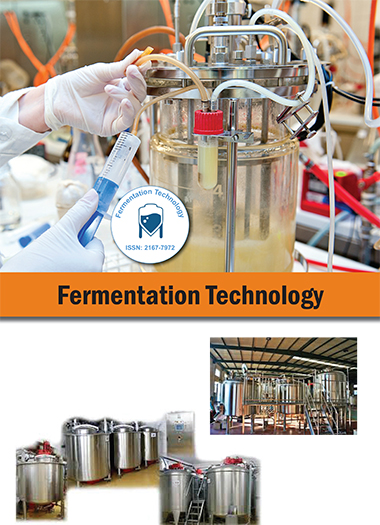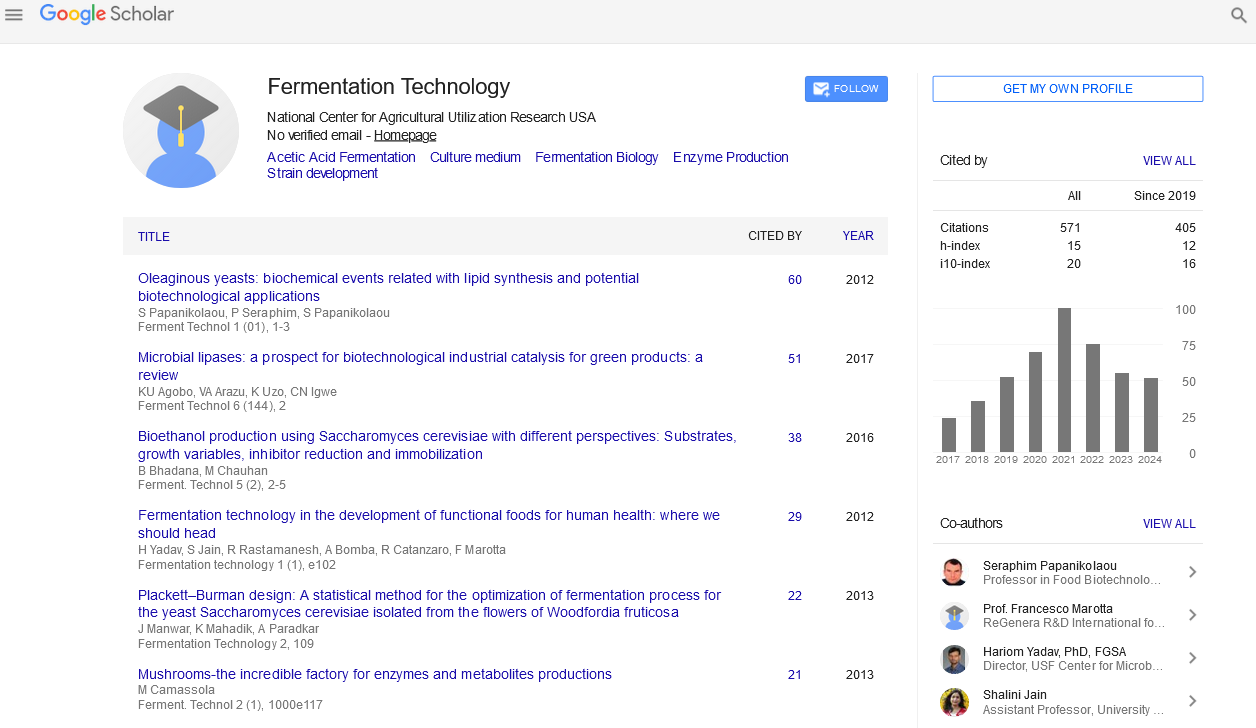Indexed In
- Open J Gate
- Genamics JournalSeek
- Access to Global Online Research in Agriculture (AGORA)
- RefSeek
- Hamdard University
- EBSCO A-Z
- OCLC- WorldCat
- Publons
Useful Links
Share This Page
Journal Flyer

Open Access Journals
- Agri and Aquaculture
- Biochemistry
- Bioinformatics & Systems Biology
- Business & Management
- Chemistry
- Clinical Sciences
- Engineering
- Food & Nutrition
- General Science
- Genetics & Molecular Biology
- Immunology & Microbiology
- Medical Sciences
- Neuroscience & Psychology
- Nursing & Health Care
- Pharmaceutical Sciences
Commentary - (2022) Volume 11, Issue 1
Lactic Acid Bacteria's Role in Fermented Products
Aria Lee*Received: 07-Nov-2022, Manuscript No. FMT-22-18925; Editor assigned: 09-Nov-2022, Pre QC No. FMT-22-18925 (PQ); Reviewed: 25-Nov-2022, QC No. FMT-22-18925; Revised: 01-Dec-2022, Manuscript No. FMT-22-18925 (R); Published: 08-Dec-2022, DOI: 10.4172/2167-7972.22.11.155
Description
In Asian, lactic acid bacteria are essential to the production of many fermented foods. In addition to being the key ingredient in kimchi as well as other soy products, they are also used to conserve fresh food by fermenting other raw materials including rice, fish, rice cakes, and wine/beer to produce organic acids that fight infections and putrefactive microbes. These microorganisms also provide tasty flavors in a variety of fermented foods and offer a selective environment that favors fermentative microorganisms. This essay examines the function of lactobacillus in a wide range of non-dairy fermented foods in Asia, as well as their physiological and nutritional roles in the Asian mold. Five categories can be used to group the many fermented food items found in Asia: fermented soybean products, fermented fish products, fermented vegetable products, fermented bread and porridges, and alcoholic beverages. Each of these fermentations involves lactic acid bacteria to variable degrees, which may or may not improve the final product. Souring is a sign of inadequate fermenting and ought to be avoided while creating soy sauce and paste. Because soybeans are an unfavorable substrate for the formation of lactic acid bacteria, it is brought on by unwanted yeast infection. Lactic acid bacteria commonly cause alcoholic fermentation to produce inferior goods. However, in the initial stage of conventional cereal alcohol fermentation, lactic bacteria create a suitable habitat for later stage fermentations, including the creation of alcohol, which contributes to the beverage's distinctive flavor and aroma. Lactic acid bacteria are important in the fermentation of raw materials generated from vegetables, and the best quantity of acid production depends on the product type.
Acidic food fermentation has the following benefits: makes foods resistant to spoilage microorganisms and the formation of toxins; reduces the likelihood that foods will transmit pathogenic microorganisms; generally preserves food products between both the time they are harvested and consumption; changes the flavor of the main ingredients and frequently improves nutritional value To circumvent the product inhibition, fermentation techniques that can keep the culture's lactate concentration below hazardous levels should be developed. There are many publications on fed-batch fermentation, which was used to overcome final product restriction in lab fermentation and ultimately increased biomass production. Due to strong osmolality and the existence of acid anions, fed-batch and pH-controlled fermentations are frequently ineffective for circumventing final product resistance in LAB fermentations. Therefore, lactate must be carefully eliminated in vivo from the culture to lessen its inhibitory effect throughout the fermentation phase. The genome probing DNA chip technique has recently been used to track and identify microbial behavior during fermentation. In the fermentation of kimchi, more than 100 different species of bacteria were found. The crucial microbes among these were Weisella confusing, Leuconostoc citreum, Lactobacillus curvatus, Lactobacillus Sakai, and Lb. Many Asian fermented foods, particularly non-dairy fermented vegetable items, benefit from the presence of lactic acid bacteria. There is still much to learn about the probiotic properties of the lactic acid bacteria found in Asian non-dairy fermented foods. For instance, the mesenteroides in kimchi may have probiotic properties. In actuality, Koreans who spend several days travelling outside of Korea without kimchi frequently have uncomfortable stomach problems and poor digestion. The lactic acids bacteria found in Asian fermented products and their bioactive components in the human diet require further study. It is essential to enhance LAB fermentation performance in terms of high final photosynthetic rate due to the significant benefits of using LAB as probiotics. Researchers can investigate the potential for developing other alternative techniques for organic acids removal from the culture that can also be utilized as a stage in the fermentation and separation process that is integrated lactic acid purification. The use of extractive fermentation processes in LAB fermentation is anticipated to result in high cell densities and high in situ lactic acid recovery at the lowest possible cost.
Citation: Lee A (2022) Lactic Acid Bacteria's Role in Fermented Products. Ferment Technol. 11:155.
Copyright: © 2022 Lee A. This is an open-access article distributed under the terms of the Creative Commons Attribution License, which permits unrestricted use, distribution, and reproduction in any medium, provided the original author and source are credited.

